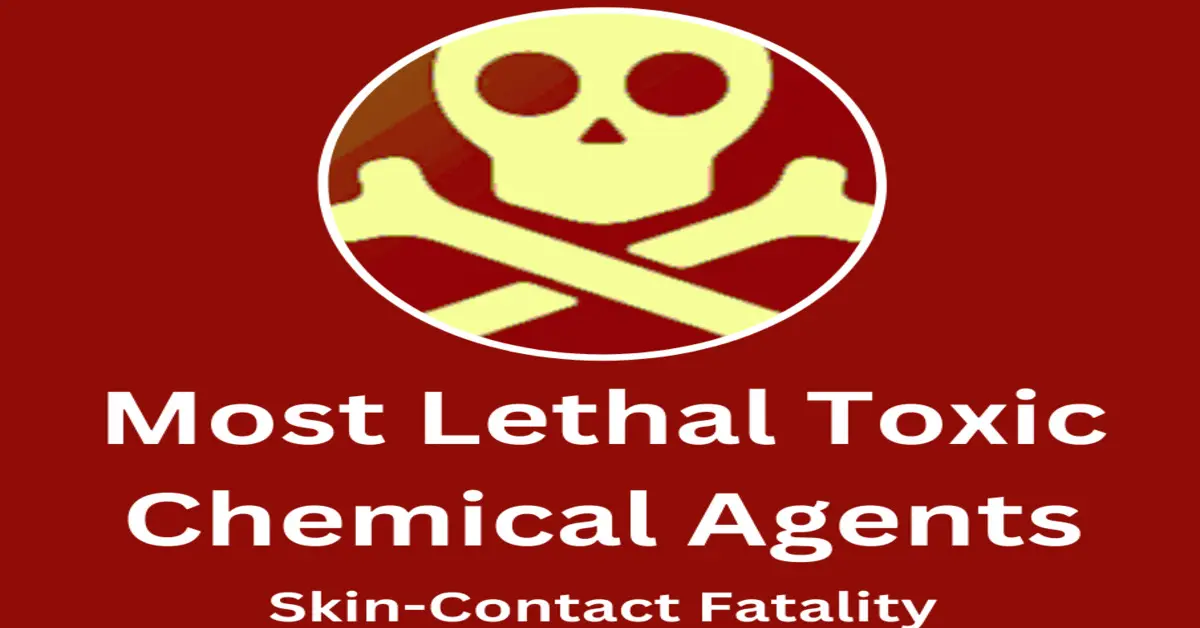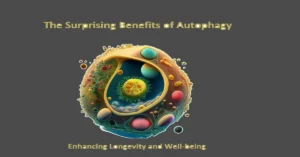Discover the top 5 most lethal and toxic chemical agents that pose a grave threat to human health and the environment. Learn about their characteristics, effects, and the importance of stringent safety measures in handling these hazardous substances. Stay informed and take necessary precautions to mitigate the risks associated with these deadly chemicals.
Table of Contents
Introduction
Botulinum Toxin: The Invisible Threat
Sarin: The Silent Killer
VX: The Persistent Deadly Nerve Agent
Polonium-210: The Radioactive Assassin
Hydrofluoric Acid: The Burning Menace
Precautions
Conclusion
Disclaimer
FAQs
Introduction
When it comes to toxic substances, there are a few that stand out for their extreme lethality. In this blog post, we will explore the top five chemicals known for their high toxicity levels and the potential dangers they pose if they come into contact with the skin. It is essential to understand the risks associated with these substances to ensure proper handling and safety precautions. Please note that these chemicals should only be handled by trained professionals in controlled environments.
1. Botulinum Toxin: The Invisible Threat
Botulinum toxin, derived from the bacteria Clostridium botulinum, is notorious for its extreme toxicity. Although it is widely known for its use in cosmetic treatments, the toxin can be lethal if it comes into contact with the skin, particularly through open wounds or mucous membranes. Botulinum toxin acts by blocking nerve signals, leading to muscle paralysis. Even a small amount of this potent toxin can result in respiratory failure and, ultimately, death. Hence, it is crucial to handle botulinum toxin with utmost care and ensure it does not come into contact with the skin.
2. Sarin: The Silent Killer
Sarin, a highly toxic nerve agent, poses a significant threat to human health. It can be absorbed through the skin, making it a lethal hazard if proper precautions are not taken. Sarin interferes with the functioning of the nervous system, leading to a range of symptoms, including paralysis, convulsions, and respiratory distress. Even a minuscule amount of sarin on the skin can result in severe poisoning. Handling sarin requires expertise and adherence to strict safety protocols to minimize the risk of skin contact and its potentially fatal consequences.
3. VX: The Persistent Deadly Nerve Agent
VX is classified as a persistent nerve agent, known for its extreme lethality. This potent chemical can be absorbed through the skin, making any contact with it extremely hazardous. VX acts by disrupting the transmission of nerve signals, causing paralysis and ultimately leading to respiratory failure. It is crucial to emphasize that even the tiniest droplet of VX on the skin can be fatal. Due to its persistence, decontamination is challenging, further underscoring the importance of prevention and safety measures to avoid skin exposure to this deadly chemical.
4. Polonium-210: The Radioactive Assassin
Polonium-210, a radioactive substance emitting alpha particles, poses a unique danger to human health. If it enters the body through open wounds or cuts on the skin, it can cause severe tissue damage and potentially be lethal. The alpha particles emitted by polonium-210 can wreak havoc on cells, leading to various health complications. Due to its highly toxic nature, strict control and containment measures are necessary to prevent skin contact and minimize the associated risks.
5. Hydrofluoric Acid: The Burning Menace
Hydrofluoric acid, a strong acid widely used in industrial applications, can cause severe burns and tissue damage upon contact with the skin. Skin exposure to this corrosive substance can result in deep, painful burns that may require immediate medical attention. Additionally, hydrofluoric acid can be absorbed into the bloodstream, leading to systemic poisoning and potentially life-threatening complications. Adequate protective measures, such as wearing appropriate personal protective equipment, should be implemented to avoid skin contact and mitigate the dangers associated with this hazardous acid.
Precautions
- Handle these highly toxic chemicals only in well-ventilated areas and with appropriate personal protective equipment (PPE).
- Follow strict safety protocols, including proper storage, labeling, and disposal procedures.
- Ensure that only trained professionals with proper knowledge and experience handle these chemicals.
- Minimize skin contact by wearing protective gloves, clothing, and eyewear when working with toxic substances.
- In case of skin contact, immediately rinse the affected area with copious amounts of water and seek medical attention.
Conclusion
Understanding the dangers posed by highly toxic chemicals that can be lethal via skin contact is paramount for ensuring the safety of individuals working with or around such substances. Botulinum toxin, sarin, VX, polonium-210, and hydrofluoric acid exemplify some of the most toxic chemicals known to pose significant risks when they come into contact with the skin. To prevent accidents and protect lives, it is essential to handle these chemicals with extreme caution, adhere to proper safety protocols, and ensure that only trained professionals work with them in controlled environments. By raising awareness and prioritizing safety measures, we can minimize the risks associated with these highly toxic substances and ensure a safer working environment for everyone.
Disclaimer
The content presented in this blog is intended solely for educational purposes and should not be regarded as a replacement for expert guidance. Handling highly toxic chemicals requires expertise and should only be done by trained professionals in controlled environments. The author and publisher of this blog are not responsible for any consequences resulting from the misuse or mishandling of these substances.
FAQs
1. Can a small amount of botulinum toxin on the skin be fatal?
Yes, even a small amount of botulinum toxin on the skin can result in severe poisoning, respiratory failure, and potentially be fatal.
2. Are nerve agents like sarin and VX lethal if they come into contact with the skin?
Yes, sarin and VX can be absorbed through the skin, making any contact with these nerve agents extremely hazardous and potentially lethal.
3. Can polonium-210 cause severe damage if it enters the body through the skin?
Yes, polonium-210 emits alpha particles that can cause severe tissue damage if it enters the body through open wounds or cuts on the skin.
4. How can I protect myself from the dangers of hydrofluoric acid?
To avoid skin contact with hydrofluoric acid, always wear appropriate personal protective equipment, including gloves, clothing, and eyewear, and follow proper safety protocols when working with this hazardous acid.
5. What should I do if I come into skin contact with a highly toxic chemical?
In case of skin contact, immediately rinse the affected area with copious amounts of water and seek immediate medical attention.
Remember, it is crucial to consult and follow the guidance of professionals when working with highly toxic chemicals to ensure your safety and the safety of others.




